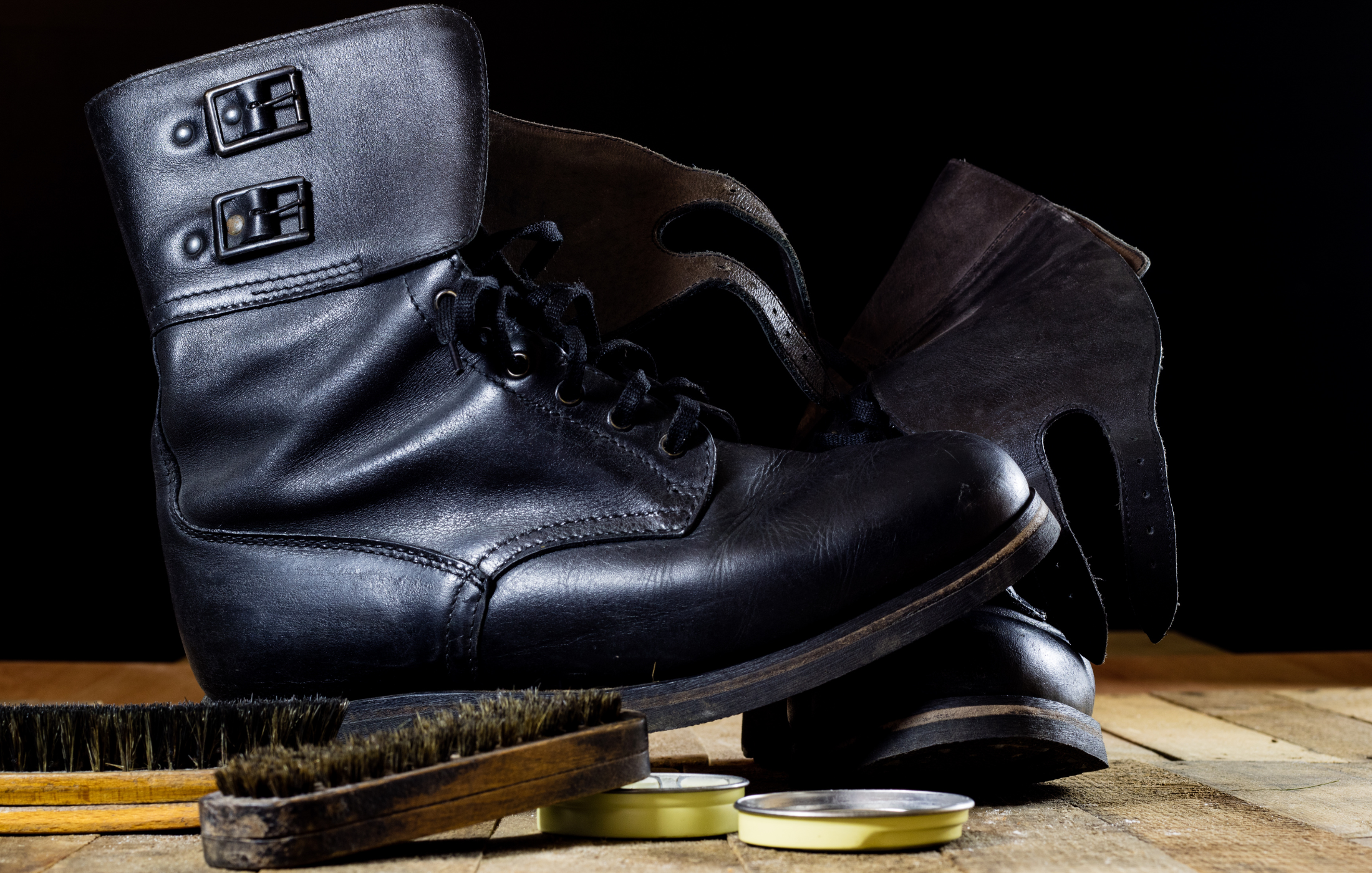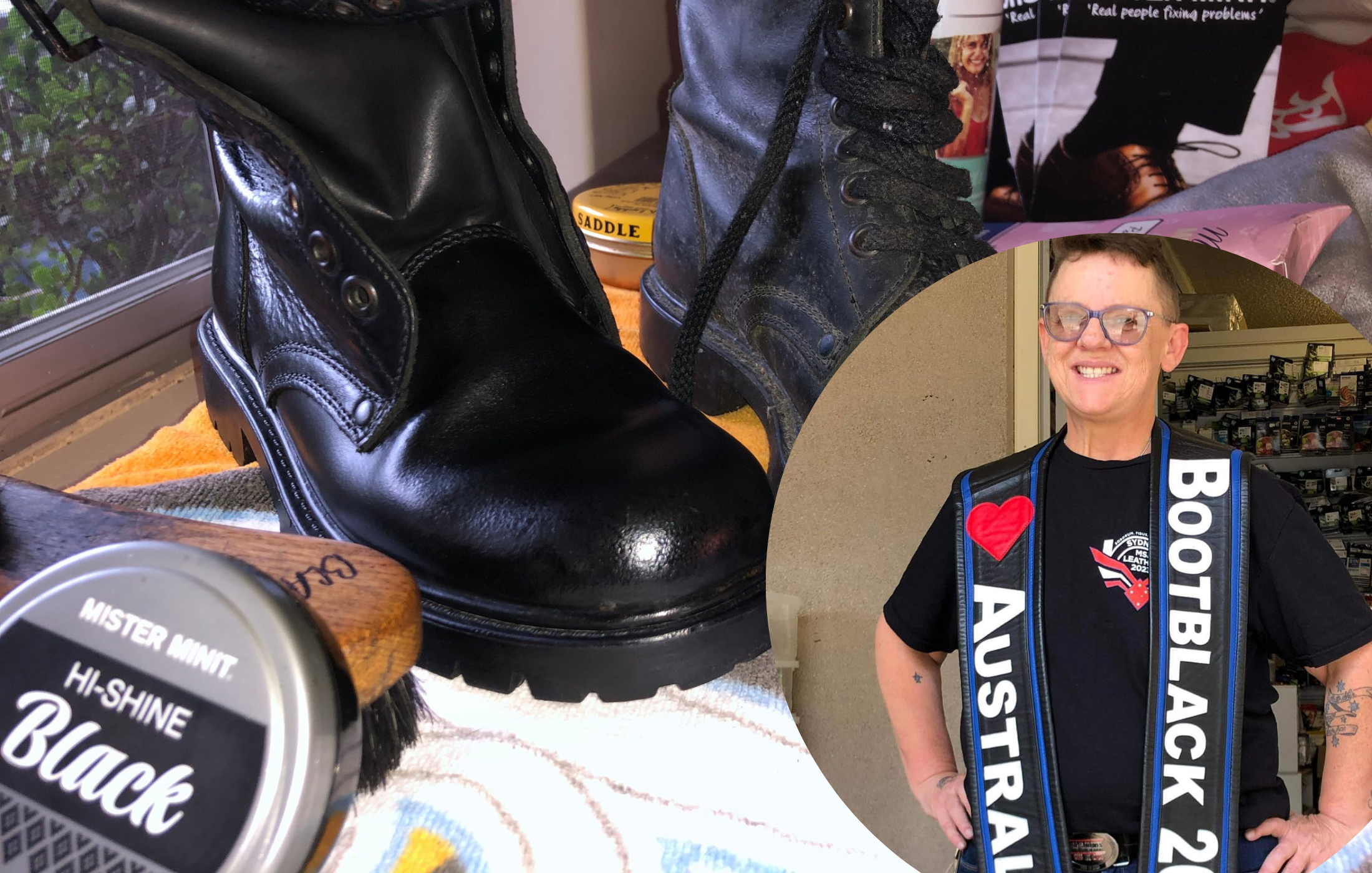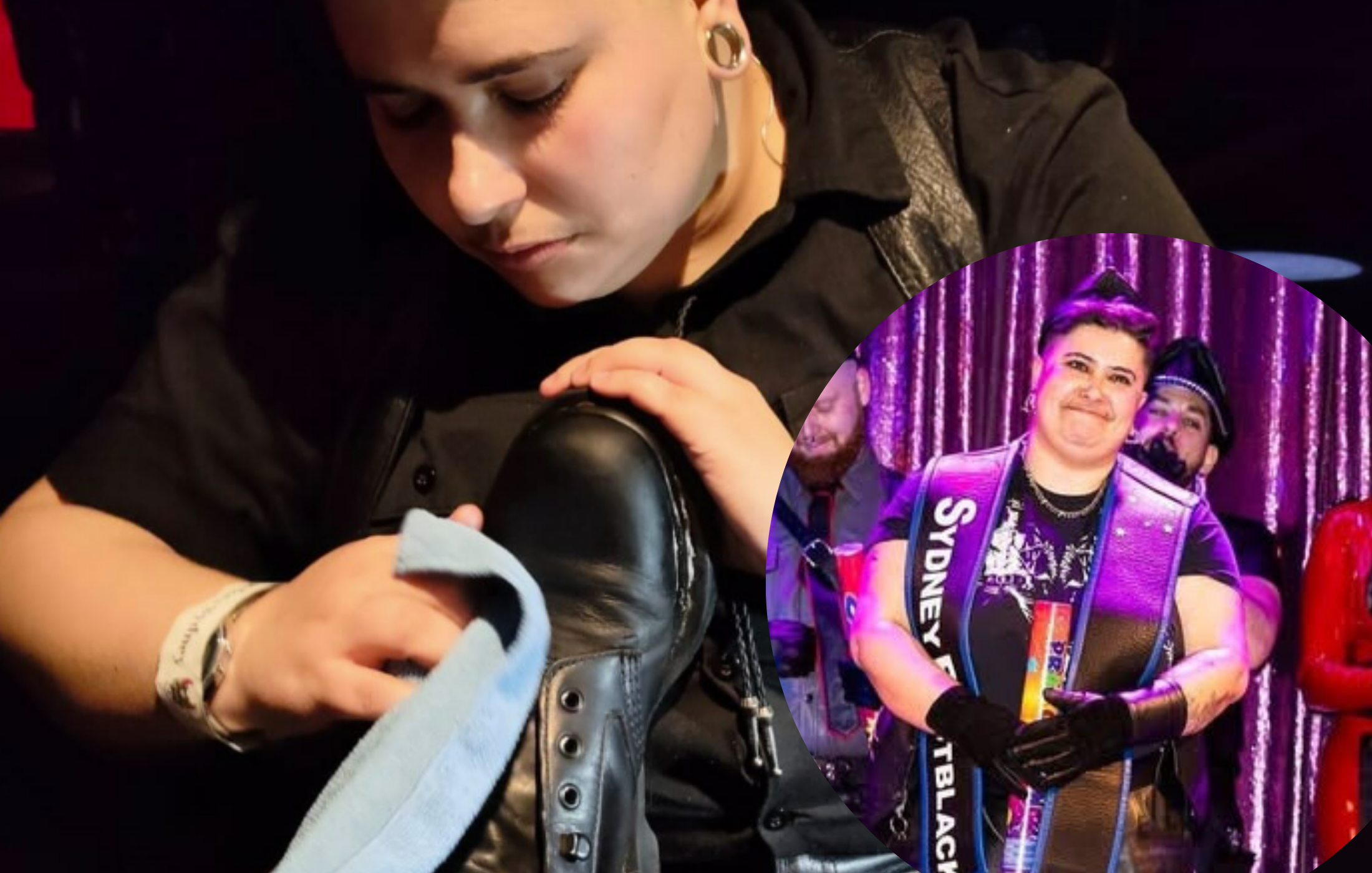Bootblacking: a tradition that truly shines
If you’ve been around the leather or kink community for a little while, you may have heard people talk about bootblacking. Maybe you have seen someone with a shine kit at an event, working intently on polishing boots while chatting with others. Bootblacking can look like a practical skill, a ritual of service, or even an intimate scene depending on the setting. For many of us, it is all of the above.
What is bootblacking
At its simplest, bootblacking is the practice of caring for leather. That can mean cleaning, conditioning, polishing, and restoring leather boots, jackets, gear, or accessories. Bootblacks often go beyond footwear, working on leather harnesses, cuffs, clothing items, and all sorts of gear. It is a mix of craft and connection. Bootblacks bring out the beauty and longevity of leather, but they also create a shared moment with the person whose gear is being cared for. It can feel sensual, service-driven, meditative, or social depending on the intention of the people involved.
A little history
Bootblacking has roots that stretch back through both working class history and queer culture. Traditionally, bootblacks were tradespeople who shined shoes on the street. In the leather community, the role took on new life. Bootblacking became a way to honour leather traditions, build skills, and offer service. It is closely tied to leather contests and events, with bootblack titles being held alongside leather titles in many parts of the world. In queer spaces, boot blacks have helped keep alive the connection between care for leather and care for community.
Why it matters
Bootblacking is more than just making leather look good. It is about respect for craft and history. It is also about connection. Many people experience it as a form of service that is both grounding and powerful. For others, it is a kink dynamic in its own right. A shining station at an event can be a place of intimacy, flirtation, reflection, or simply a way to meet people and talk while keeping your hands busy.
How to get into it
The best way to learn is to start small and stay curious.
Get a kit: basic supplies include a horsehair brush, soft cloths, black and neutral polish, and a good leather conditioner. You can expand from there as you learn.
Practice on your own gear: start by cleaning and conditioning your own boots or leather pieces. Notice how different products affect the look and feel.
Watch and learn: many bootblacks are generous with their knowledge. If you see someone working at an event, ask if you can observe while they work.
Connect with the community: look out for workshops or bootblacking stations at kink and leather events. These are great places to learn hands-on.
Think about intention: decide what draws you to boot -blacking. Is it craft, service, connection, or kink play? Your answer can shape how you approach it.
Etiquette at events
If you sit down with a bootblack at an event and they work on your boots or other leather items, it is good form to tip them. Bootblacks put in time, skill, and supplies to care for your gear. Even if the interaction feels playful or intimate, tipping is a way to acknowledge and respect the work involved.
Some bootblacks will have a suggested tip listed at events, which helps cover their products and effort. Cash is always welcome and appreciated, although some people also like to offer a drink or another small token of thanks as well as a tip.
If you are looking for more than a quick shine, many bootblacks also take on commissions outside of events. This can include restoring older pieces, giving your whole kit a deep refresh, or doing more specialised leather work. If you connect with a bootblack at a party and love their work, it is worth asking if they take on projects privately.
Where to go from here
If the idea excites you, start by experimenting in your own space. Try cleaning and conditioning a pair of your own boots or a thrifted leather piece and notice how the leather responds. You can also look for online tutorials or guides that break down the steps.
When you feel ready to take the next step, head to an event with a bootblacking station and spend some time watching. Many boot blacks are open to chatting about their process and happy to share advice if you ask respectfully. Some communities also run workshops where you can get hands-on practice with guidance.
Over time, you can decide if you want to build boot blacking into your personal ritual, your play, or even take on a more public role in the community.
Bootblacking keeps leather alive, but more importantly it keeps community alive. If you find yourself drawn to the smell of polish, the feel of leather, or the spark that comes when you shine for someone else, you might just have found a new passion.
Ready to explore more?
If you’re curious to see bootblacks in action or connect with those keeping this tradition alive, check out some of the incredible boot blacks we admire below.
Sovryn Shynes
Australian Leather Bootblack 2023
A respected figure in the leather and kink communities, Sovryn known for her expertise and dedication to the craft of bootblacking, which she views as an act of preservation, connection, and care. Follow on Instagram.
Mia
Sydney Bootblack 2025
A proud leatherdyke and craftsperson who's happy when her hands are busy, Mia believes bootblacking is community service, connection, care, and preservation of our leather history. Follow on Instagram.



